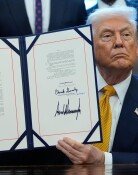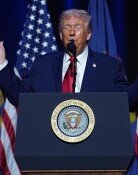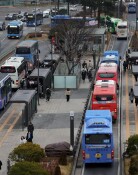Dong-A Ilbo Led Independence Movement against Japan
Dong-A Ilbo Led Independence Movement against Japan
Posted March. 01, 2008 03:21,
The March 1st Movement laid the foundation of the Dong-A Ilbo. At that time, ruling the Koreans by the bayonet, Japan thoroughly banned the Koreans from publishing daily newspapers. Faced with Koreans declaration of liberation and resistant movement, Japanese authorities changed its ruling system. The military police were replaced by a civilian force, and limited press freedom was permitted. Two of the three major Korean dailies, the Dong-A Ilbo and the Chosun Ilbo, were established.
The spirits of the March 1st Movement can be summed up as peace and nonviolence. Although it was not a systematic movement with the nationwide network, the movement kindled a nationwide protest that continued to spread to every corner of the country. Inspired by the consistent resistance and uprising against Japan at home, Koreans living abroad and other Asian nations also rose up against the Japanese colonial ruling.
The Movement of Compensation for National Debt in 1907 and the March 1st Movement have in common two things. First, they were aimed at achieving independence from Japan. And both were voluntary organizations without national networks. Although their goal of independence wasnt accomplished immediately, the two have had significant influences on the nations fight for independence. Evoking public awareness and sentiment, the movements inspired an indomitable will to fight against the Japanese colonialism.
The March 1st Movement served as an opportunity to inform the world about Koreas situation and to receive international assistance. It also laid the foundation for independence by providing the materials of good fights against Japan. As the result of the movement, the provincial government of the Republic of Korea in Shanghai was established, but any organization representing the nation couldnt be formed at home.
The newspapers were the central forces of the nation, permitted by the Japanese authorities. Koreans tried to establish a foundation for national independence by improving the national culture and securing national finances. But those efforts failed because there was no institute to organize such movements. The only way for the nation without the governmental entity to communicate with each other was the freedom of press and freedom of association.
Japan, however, never allowed Korea to do so. Under the Japanese Government-General ruling, Koreans could have enjoyed the limited freedom of press. During this period, Korean intellectuals in various fields including education, literature, academics, religion and business communicated with each other and reaffirmed their bonds through the Korean newspapers.
The Dong-A Ilbo was founded on April 1 in 1920, when the nation was in a whirl of the March 1st Movement. Repressed anger under the Japanese colonial rule was erupted through the national movement, but a new strategy for the national freedom was badly required. Social tension was high amid confusion and disorder over how to achieve the nations independence. Influenced by various ideologies and trends of thought, Koreans felt confused in their traditional values.
The realization that nationalism alone cannot overcome the Japanese colonialism led to a number of influxes of thoughts such as socialism, communism and anarchism. Socialism emerged as an alternative to liberalism of the West among the highbrows until the mid 1920s, giving rise to a hybrid movement combined with nationalism. Various thoughts and ideas at the time were discussed and spread via newspapers and magazines which appeared after 1920.
The Dong-A Ilbos editorial on Jan. 3, 1924, conveys the social atmosphere at the time. We should strive to establish far-reaching plans for the nation and the whole nation need to make all-out efforts to accomplish them from the day of their establishment. The surveillance of Japan strengthened accordingly.
After the annexation to Japan, the control and censorship of publications by the Japanese Government-General shifted to the Book Department in 1926 and issues regarding the independence movement and ideologies was assigned to Publication Police within the Police Bureau of the Government-General.
The Korean newspapers, entrusted with a mission to succeed the spirits of the March 1st Movement, couldnt escape the intensifying surveillance and control of the Japanese rule. However, the Dong-A Ilbo ran an article about the public trials of the 48 national leaders of the March 1st Movement on July 12, 1920, taking an unprecedented move to carry all the 48 leaders features on the entire page.
In the 1930s, various national movements were pursued including movements for promotion of the Korean alphabet, rural enlightenment, enactment of the song of Joseon and preservation of General Lee Soon-shins relics. The movement for promotion to use Korean products and to build a private Korean college (1923) didnt succeed, but those national movements were pioneered by the Korean newspapers under the Japanese colonial rule.
After liberation, the Dong-A Ilbo and other journalists advanced to various fields to contribute to developing the foundation of the nation, democracy and national culture. These efforts can be evaluated as the succession of the March 1st Movement. Newspapers provided the nations talent with a place where they could continue their resistance and struggle against the Japaneses ruling. In the observance of the March 1st Movement, Koreans need to remember the noble spirits of our forefathers.







